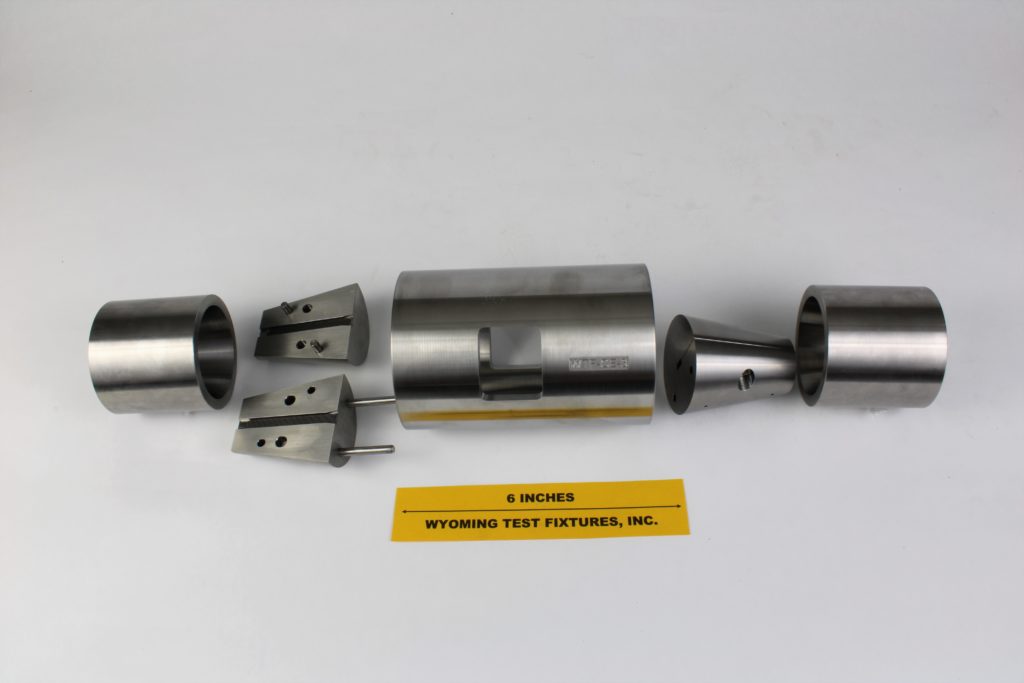Celanese Compression Test Fixture (formerly ASTM D3410)
Model No. WTF-CE (Stainless Steel)

Fig. 1: Exploded view of Celanese Compression Test Fixture.
The Celanese Compression Test Fixture was first presented by I.K. Park of the Celanese Corporation in 1971 (Reference 1). It was accepted as ASTM Standard D3410 in 1975 (Reference 2). However, several improved compression fixtures have been developed since then. Thus, the Celanese fixture was deleted from ASTM D3410 in 2003.
The two halves of each cone-shaped wedge grip are bolted together after the specimen is inserted between them, using the spacer bar provided to establish the gage length. Overall alignment of the fixture halves is aided by a close-fitting sleeve which slides over the assembly after the specimen is installed, but is also a potential source of binding.
The Celanese fixture is very compact, weighing approximately 10 lb. However, it is frequently criticized because of its cone-in-cone arrangement of the wedge grips. In order to maintain full surface contact between each pair of split half-cones and the mating conical cavities in the end blocks, the tabbed ends of the specimen must be fabricated to a precise thickness, viz., a total thickness at the tabbed ends of the specimen of 0.157 in. ± 0.002 in. This required precision essentially mandates surface grinding of the tabs after adhesively bonding them to the specimen. This increases specimen preparation time and cost.
The standard fixture utilizes file faces as the gripping surfaces. That is, a section of an actual machinist’s metal-working file is pressed into a slot in each wedge grip. Alternatively, machined serrations or tungsten carbide particle-coated surfaces can be utilized. The latter two types of surfaces are typically used on other tension and compression grips.
Sources of Additional Information:
1) I.K. Park, "Tensile and Compressive Test Methods for High-Modulus Graphite Fibre-Reinforced Composites," Proceedings of the International Conference on Carbon Fibres, Their Composites and Applications, Paper No. 23, The Plastics Institute, London, 1971.
2) ASTM Standard D3410-03 (reapproved 2008), "Compressive Properties of Polymer Matrix Composite Materials with Unsupported Gage Section by Shear Loading," American Society for Testing and Materials, West Conshohocken, Pennsylvania (first issued in 1975).
3) D.F. Adams, "Current Status of Compression Testing of Composite Materials," Proceedings of the 40th International SAMPE Symposium, Anaheim, California, May 1995, pp. 1831-1843.

